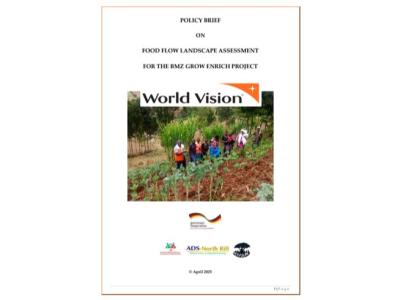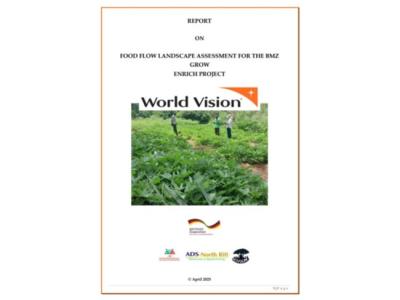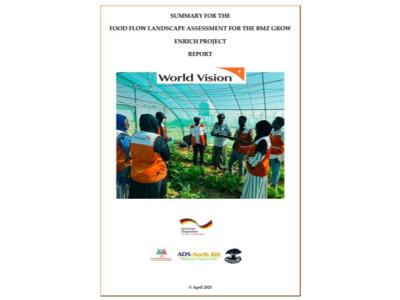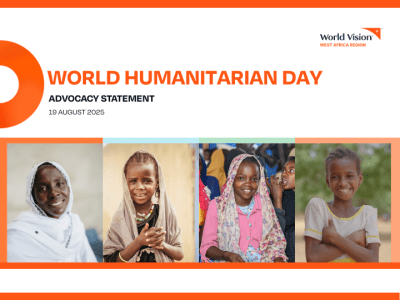publication / September 3, 2025
Grow ENRICH Food Flow Landscape Assessment Policy Brief
The Grow ENRICH Food Flow Landscape Assessment Policy Brief highlights policy recommendations from key findings of a food systems study in Kenya, Somalia, and Tanzania.
publication / September 3, 2025
Grow ENRICH Food Flow Landscape Assessment Report
The Grow ENRICH Food Flow Landscape Assessment explores food systems in Kenya, Somalia, and Tanzania to identify gaps and opportunities for food security.
publication / September 3, 2025
Behaviour Change: Evidence Summary for Food Hygiene
Food hygiene is critical to health, with 600 million people falling ill annually due to contaminated food. Children under five bear 40% of the burden, with 125,000 deaths each year.
publication / September 3, 2025
Grow ENRICH Food Flow Landscape Assessment Summary
The Grow ENRICH Food Flow Landscape Assessment Summary highlights key findings from a food systems study in Kenya, Somalia, and Tanzania.
press release / August 25, 2025
Cholera outbreak in South Sudan nears breaking point; children’s lives and displaced population at grave risk
South Sudan’s cholera outbreak is reaching a critical level, now affecting more than 40,000 children—including 20,000 under the age of five—and placing millions more at serious risk. With more than 88,000 cases and 1,500 deaths already reported, the outbreak is accelerating at an alarming rate. World Vision is deeply concerned about the deadly disease spreading across the country. The crisis is especially severe for children, who are trapped in a dangerous mix of disease, hunger, and displacement.
publication / September 3, 2025
Grow ENRICH Food Flow Landscape Assessment Infographic Summary
The Grow ENRICH Food Flow Landscape Assessment Infographic Summary highlights key findings of a food systems study in Kenya, Somalia, and Tanzania.
press release / September 9, 2025
World Vision Afghanistan Redeclares CAT III Sustained Humanitarian Response
We continue to support the most vulnerable children in the country, as humanitarian needs have remained high since the international withdrawal in 2021.
article / August 25, 2025
A Mother and Daughter’s Triumph Over Malnutrition with #ENOUGH Nutritious Food
A family’s inspiring journey from malnutrition to health, showing how nutrition clubs and #ENOUGH food transform children’s lives.
publication / August 19, 2025
World Vision Afrique de l'Ouest Déclaration de Plaidoyer - Journée Mondiale de l'Aide Humanitaire 2025
Journée mondiale de l’aide humanitaire 2025 : World Vision appelle à la protection des humanitaires, au financement, à la sécurité et la dignité des enfants touchés par les crises en Afrique de l’Ouest et dans le monde.








